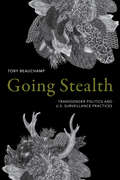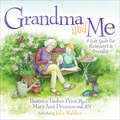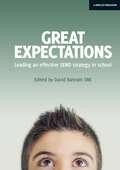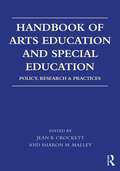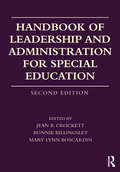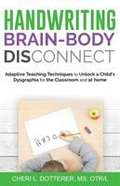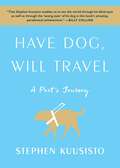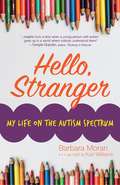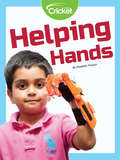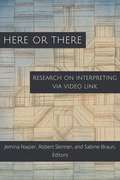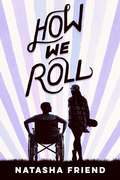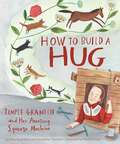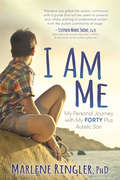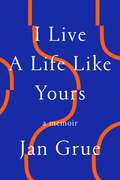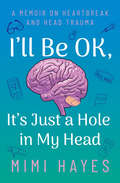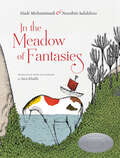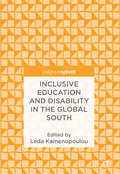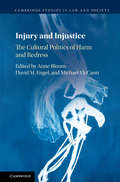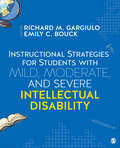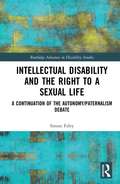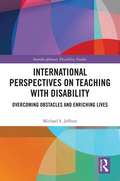- Table View
- List View
Going Stealth: Transgender Politics and U.S. Surveillance Practices
by Toby BeauchampIn Going Stealth Toby Beauchamp demonstrates how the enforcement of gender conformity is linked to state surveillance practices that identify threats based on racial, gender, national, and ableist categories of difference. Positioning surveillance as central to our understanding of transgender politics, Beauchamp examines a range of issues, from bathroom bills and TSA screening practices to Chelsea Manning's trial, to show how security practices extend into the everyday aspects of our gendered lives. He brings the fields of disability, science and technology, and surveillance studies into conversation with transgender studies to show how the scrutinizing of gender nonconformity is motivated less by explicit transgender identities than by the perceived threat that gender nonconformity poses to the U.S. racial and security state. Beauchamp uses instances of gender surveillance to demonstrate how disciplinary power attempts to produce conformist citizens and regulate difference through discourses of security. At the same time, he contends that greater visibility and recognition for gender nonconformity, while sometimes beneficial, might actually enable the surveillance state to more effectively track, measure, and control trans bodies and identities.
Grandma and Me: A Kid's Guide for Alzheimer's & Dementia
by Mary Ann Drummond Beatrice Tauber PriorA beautiful storybook that helps children understand their grandparent&’s challenges, written by a nurse and a psychologist. The authors of Grandma and Me have combined their years of clinical experience to create a truly engaging, yet informative book for young children on the topics of Alzheimer&’s and dementia. With beautiful artwork to capture children&’s attention, Grandma and Me provides a gentle, age-appropriate portrait of Alzheimer&’s disease in the context of a loving relationship between grandparent and grandchild—and provides tools that will help children continue to have a relationship with their loved one despite the disease. Grandma and Me addresses a difficult topic with compassion and understanding, and allows families to successfully navigate the journey ahead.
Great Expectations: Leading An Effective Send Strategy In School
by David BartramA selection of essays from leading educationalists and school leaders with a track record of improving outcomes for children and young people with additional needs, highlighting the significant role that school leaders play in shaping effective practice in SEND. Based on the SEND Review Guide, a national self-evaluation framework part-funded by the DfE and authored by David Bartram and Vijita Patel, downloaded by over 3000 schools, the book is divided into eight sections: Leadership; Teaching and Learning; Working with Pupils and Parents; Identification and Assessment; Monitoring and Tracking; Efficient Use of Resources; Developing Provision; Improving OutcomesEach section includes 3-4 essays. The opening essays offer a broad national perspective on the focus area, authored by a leading educationalist. The following essays, authored by school leaders from a range of educational settings including secondary, primary and special schools, highlight practical examples of how they have improved outcomes for this group of pupils, often in particularly challenging contexts. There will be a strong focus on impact of the approach.
Great Expectations: Leading An Effective Send Strategy In School
by David BartramA selection of essays from leading educationalists and school leaders with a track record of improving outcomes for children and young people with additional needs, highlighting the significant role that school leaders play in shaping effective practice in SEND. Based on the SEND Review Guide, a national self-evaluation framework part-funded by the DfE and authored by David Bartram and Vijita Patel, downloaded by over 3000 schools, the book is divided into eight sections: Leadership; Teaching and Learning; Working with Pupils and Parents; Identification and Assessment; Monitoring and Tracking; Efficient Use of Resources; Developing Provision; Improving OutcomesEach section includes 3-4 essays. The opening essays offer a broad national perspective on the focus area, authored by a leading educationalist. The following essays, authored by school leaders from a range of educational settings including secondary, primary and special schools, highlight practical examples of how they have improved outcomes for this group of pupils, often in particularly challenging contexts. There will be a strong focus on impact of the approach.
Handbook of Arts Education and Special Education: Policy, Research, and Practices
by Jean B. Crockett Sharon M. MalleyThe Handbook of Arts Education and Special Education brings together, for the first time in a single reference volume, policy, research, and practices in special education and arts education synthesized to inform stakeholders across a broad spectrum of education. This handbook encompasses arts education for students with disabilities, from pre-K through transition to postsecondary education and careers as well as community arts education, with particular attention to conceptual foundations; research-based practices; professional standards; students’ cognitive, artistic, and social growth; career education; and future directions for research and practice in special education and arts education.
Handbook of Leadership and Administration for Special Education
by Jean B. Crockett Bonnie Billingsley Mary Lynn BoscardinThe Handbook of Leadership and Administration for Special Education brings together research informing practice in leading special education from preschool through transition into postsecondary settings. The second edition of this comprehensive handbook has been fully updated to provide coverage of disability policy, historical roots, policy and legal perspectives, as well as effective, collaborative, and instructional leadership practices that support the administration of special education. It can be used as a reference volume for scholars, administrators, practitioners, and policy makers, as well as a textbook for graduate courses related to the administration of special education.
Handwriting Brain-Body Disconnect: Adaptive teaching techniques to unlock a child's dysgraphia for the classroom and at home
by Cheri L DottererThere is a misconception about dyslexia, dysgraphia, and dyscalculia. Some people use the terms interchangeably. Simply put: dyslexia is defined as difficulty with reading; dysgraphia is defined as difficulty with writing; and dyscalculia is defined as difficulty with math concepts. Each topic is much more complicated. This book is written for teachers, parents, occupational therapists transitioning to school-based practice, and other related service professionals, focusing on dysgraphia.
Haptic Communication: The Helen Keller National Center's American Edition of the Original Title Haptisk Kommunikasjon
by Hellen Keller National Center Hildebjørg Karlsen Bjørge Kathrine Goborg Rehder Magni ØveråsThanks to a new, emerging system of touch signals, people who are DeafBlind and blind now can have access to visual and environmental information at the same time as a sighted-hearing person.
Have Dog, Will Travel: A Poet's Journey
by Stephen Kuusisto<P>In a lyrical love letter to guide dogs everywhere, a blind poet shares his delightful story of how a guide dog changed his life and helped him discover a newfound appreciation for travel and independence. <P>Stephen Kuusisto was born legally blind—but he was also raised in the 1950s and taught to deny his blindness in order to "pass" as sighted. Stephen attended public school, rode a bike, and read books pressed right up against his nose. As an adult, he coped with his limited vision by becoming a professor in a small college town, memorizing routes for all of the places he needed to be. Then, at the age of 38, he was laid off. With no other job opportunities in his vicinity, he would have to travel to find work. <P>This is how he found himself at Guiding Eyes paired with a Labrador named Corky. In this vivid and lyrical memoir, Stephen Kuusisto recounts how an incredible partnership with a guide dog changed his life and the heart-stopping, wondrous adventure that began for him in midlife. Profound and deeply moving, this is a spiritual journey, the story of discovering that life with a guide dog is both a method and a state of mind.
Hello, Stranger: My Life on the Autism Spectrum
by Barbara Moran Karl Williams“…Insights from a time when a young person with autism grew up in a world where nobody understood them!” – Temple Grandin, author, Thinking in PicturesBarbara Moran has never known how to be good.As a child, she made strange noises, fidgeted constantly, and licked her lips until they cracked. She had “upsets” that embarrassed and frustrated her family. Worse still, she developed friendships with inanimate objects—everything from roller skates to tables to an antique refrigerator—and became obsessed with images of cathedrals.She was institutionalized, analyzed, and marginalized, cast aside as not trying hard enough to fit in.But after almost forty years, Barbara was given an answer for her inability to be like, and to connect with, other people: autism.Hello, Stranger is the story of a misunderstood life that serves as an eye-opening call for compassion. Bracingly honest, Barbara describes the profound loneliness of being abandoned and judged while also expressing her deep yearning simply to be loved and to give love.Hello, Stranger is a challenge to every reader to see the beauty and the humanity present in every individual.“An extraordinary look at autism from the inside – by turns heartbreaking, uplifting, illuminating, witty, and wise.” – Steve Silberman, author, NeuroTribes: The Legacy of Autism and the Future of Neurodiversity
Helping Hands
by Elizabeth PrestonSome kids are born missing a hand or fingers, others lose them because of accidents. Find out how people are printing artificial hands on 3-D printers to help those who need a hand. They are cheap, easy to build, and really work!
Here or There: Research on Interpreting via Video Link (Gallaudet Studies In Interpret #16)
by Robert Skinner Jemina Napier Sabine BraunThe field of sign language interpreting is undergoing an exponential increase in the delivery of services through remote and video technologies. The nature of these technologies challenges established notions of interpreting as a situated, communicative event and of the interpreter as a participant. As a result, new perspectives and research are necessary for interpreters to thrive in this environment. This volume fills that gap and features interdisciplinary explorations of remote interpreting from spoken and signed language interpreting scholars who examine various issues from linguistic, sociological, physiological, and environmental perspectives. Here or There presents cutting edge, empirical research that informs the professional practice of remote interpreting, whether it be video relay service, video conference, or video remote interpreting. The research is augmented by the perspectives of stakeholders and deaf consumers on the quality of the interpreted work. Among the topics covered are professional attitudes and motivations, interpreting in specific contexts, and adaptation strategies. The contributors also address potential implications for relying on remote interpreting, discuss remote interpreter education, and offer recommendations for service providers.
How We Roll
by Natasha FriendQuinn is a teen who loves her family, skateboarding, basketball, and her friends, but after she's diagnosed with a condition called alopecia which causes her to lose all of her hair, her friends abandon her. Jake was once a star football player, but because of a freak accident—caused by his brother—he loses both of his legs. Quinn and Jake meet and find the confidence to believe in themselves again, and maybe even love.
How to Build a Hug: Temple Grandin And Her Amazing Squeeze Machine
by Amy GuglielmoAmy Guglielmo, Jacqueline Tourville, and Giselle Potter come together to tell the inspiring story of autism advocate Dr. Temple Grandin and her brilliant invention: the hug machine. <P><P> As a young girl, Temple Grandin loved folding paper kites, making obstacle courses, and building lean-tos. But she really didn’t like hugs. Temple wanted to be held—but to her, hugs felt like being stuffed inside the scratchiest sock in the world; like a tidal wave of dentist drills, sandpaper, and awful cologne, coming at her all at once. Would she ever get to enjoy the comfort of a hug? <P><P> Then one day, Temple had an idea. If she couldn’t receive a hug, she would make one…she would build a hug machine!
I Am Me: My Personal Journey with My Forty Plus Autistic Son
by Marlene RinglerA mother of an adult child with autism ponders what happens to children like hers when their parents and families are no longer around to care for them.I Am Me challenges the values and priorities of institutions, communities, and systems to grapple with what is today referred to as a &“tsunami&”—the nearly 50,000 children who each year face an adult world so sadly unprepared to deal with their ever-growing needs. Like snowflakes, each autistic is different, no less, and deserves respect. It is a journey told through the prism of a mother who offers, hope, belief, and conviction that the life of a child with autism can and should be fulfilling and rewarding, and who compels readers to engage in helping to make the world a safer and better place for those affected by this mysterious condition. In her personal story, Dr. Marlene Ringler takes us into the world of the autistic and helps us to appreciate the complexities of living in a world where being different is a lifelong struggle. She shares her own investigation of this complex neurological disorder, looking for answers where few, if any, exist. Her fascinating journey directly addresses those very human questions as she presents her research findings and current investigations into the spectrum disorder in everyday language.&“Marlene has gifted the autism community with a guide that will be useful to parents and others wishing to understand autism from the autism community at large.&” —Stephen Mark Shore, EdD, author of Beyond the Wall: Personal Experiences with Autism and Asperger Syndrome
I Live a Life Like Yours: A Memoir
by Jan Grue* A New York Times Editors' Choice * Publishers Weekly Best Nonfiction Books of 2021 *I am not talking about surviving. I am not talking about becoming human, but about how I came to realize that I had always already been human. I am writing about all that I wanted to have, and how I got it. I am writing about what it cost, and how I was able to afford it. Jan Grue was diagnosed with spinal muscular atrophy at the age of three. Shifting between specific periods of his life—his youth with his parents and sister in Norway; his years of study in Berkeley, St. Petersburg, and Amsterdam; and his current life as a professor, husband, and father—he intersperses these histories with elegant, astonishingly wise reflections on the world, social structures, disability, loss, relationships, and the body: in short, on what it means to be human. Along the way, Grue moves effortlessly between his own story and those of others, incorporating reflections on philosophy, film, art, and the work of writers from Joan Didion to Michael Foucault. He revives the cold, clinical language of his childhood, drawing from a stack of medical records that first forced the boy who thought of himself as “just Jan” to perceive that his body, and therefore his self, was defined by its defects.I Live a Life Like Yours is a love story. It is rich with loss, sorrow, and joy, and with the details of one life: a girlfriend pushing Grue through the airport and forgetting him next to the baggage claim; schoolmates forming a chain behind his wheelchair on the ice one winter day; his parents writing desperate letters in search of proper treatment for their son; his own young son climbing into his lap as he sits in his wheelchair, only to leap down and run away too quickly to catch. It is a story about accepting one’s own body and limitations, and learning to love life as it is while remaining open to hope and discovery.
I'll Be OK, It's Just A Hole In My Head: A Memoir On Heartbeak And Head Trauma
by Mimi HayesI'll Be OK, It's Just a Hole in My Head: A Memoir on Heartbreak and Head Trauma is a humorous and thoughtful cross between Jill Bolte Taylor's My Stroke of Insight and Jenny Lawson's Furiously Happy. Shocking and funny, Hayes' memoir shares the true story of a sudden brain hemorrhage at the age of twenty-two - and the heartache and strength that it took to overcome it. .
I'll Be OK, It's Just A Hole In My Head: A Memoir On Heartbeak And Head Trauma
by Mimi HayesI'll Be OK, It's Just a Hole in My Head: A Memoir on Heartbreak and Head Trauma is a humorous and thoughtful cross between Jill Bolte Taylor's My Stroke of Insight and Jenny Lawson's Furiously Happy. Shocking and funny, Hayes' memoir shares the true story of a sudden brain hemorrhage at the age of twenty-two - and the heartache and strength that it took to overcome it. .
In the Meadow of Fantasies
by Hadi MohammadiWritten by the winner of IBBY's Best Book Award, Mohammad Hadi Mohammadi, In the Meadow of Fantasies is one girl's luminous escapade into a land of seven mysterious horses.A young girl with a physical disability gazes up at a mobile of spinning horses from her little pink bed in her room filled with leafy plants. As she watches them prance about, the tufted snout of a real live horse peeks through her bedroom door. Soon enough, our bright protagonist is off and cantering on an adventure with seven majestic horses. The first six are easily understood: their colors, dreams, families, and origins are described and accompanied with exquisite drawings. The seventh horse, however, is an enigmatic creature with no clear hue or history, a lack that is soon filled in by the loving offerings of the other ponies. A story about dreaming and about caring for others, In the Meadow of Fantasies will remind young readers of their own reveries and conjure new fantasies of friendly creatures in far off lands.
Inclusive Education and Disability in the Global South
by Leda KamenopoulouThis edited volume examines inclusive education and disability in the global South. Presenting four qualitative research studies conducted in Malaysia, Bhutan, Philippines and Belize, the authors examine the implementation of inclusive education and disabled children’s participation in the education system: contexts on which very little is known. Thus, this book provides a unique opportunity to access rare context-specific information concerning this region of the world; and to reflect on the particular challenges some countries face in the realization of full participation of all children within education. Authored by researchers who are also teaching professionals with experience and understanding of the complexities of the real world, this book reminds us that researchers and policy makers must listen to all voices and perspectives: especially those that have remained silenced and ignored.
Injury and Injustice: The Cultural Politics of Harm and Redress (Cambridge Studies in Law and Society)
by David M. Engel Anne Bloom Michael McCannThis book addresses some of the most difficult and important debates over injury and law now taking place in societies around the world. The essays tackle the inescapable experience of injury and its implications for social inequality in different cultural settings. Topics include the tension between physical and reputational injuries, the construction of human injuries versus injuries to non-human life, virtual injuries, the normalization and infliction of injuries on vulnerable victims, the question of reparations for slavery, and the paradoxical degradation of victims through legal actions meant to compensate them for their disabilities. Authors include social theorists, social scientists and legal scholars, and the subject matter extends to the Middle East and Asia, as well as North America.
Instructional Strategies for Students With Mild, Moderate, and Severe Intellectual Disability
by Richard M. Gargiulo Emily C. BouckStrategies for Students with Mild, Moderate, and Severe Intellectual Disabilities is a textbook for undergraduate and graduate students enrolled in special and general education teacher preparation programs (as well as practicing professionals) offering a solid, research based text on instructional methodologies for teaching students with intellectual disability across the spectrum of intellectual abilities. The book addresses both academic and functional curricula in addition to behavioral interventions. Additionally, Instructional Strategies for Students Mild, Moderate, and Severe Intellectual Disability adopts developmental or life span approach covering preschool through adolescence and young adulthood.
Instructional Strategies for Students With Mild, Moderate, and Severe Intellectual Disability
by Richard M. Gargiulo Emily C. BouckStrategies for Students with Mild, Moderate, and Severe Intellectual Disabilities is a textbook for undergraduate and graduate students enrolled in special and general education teacher preparation programs (as well as practicing professionals) offering a solid, research based text on instructional methodologies for teaching students with intellectual disability across the spectrum of intellectual abilities. The book addresses both academic and functional curricula in addition to behavioral interventions. Additionally, Instructional Strategies for Students Mild, Moderate, and Severe Intellectual Disability adopts developmental or life span approach covering preschool through adolescence and young adulthood.
Intellectual Disability and the Right to a Sexual Life: A Continuation of the Autonomy/Paternalism Debate (Routledge Advances in Disability Studies)
by Simon FoleyOne of the perennial political/philosophical questions concerns whether it is ever justifiable for a third party to paternalistically restrict an adult’s freedom to ensure their own, or society’s, best interests are protected. Wherever one stands on this debate it remains the case that, unlike their non-impaired contemporaries, many intellectually disabled adults are subjected to a paternalistic regime of care. This is particularly the case regarding members of this population exercising more control of their sexuality. Utilizing rare empirical data, Foucault's theory of power and Kristeva’s concept of abjection, this work shows that many non-disabled people – including family members – hold ambivalent attitudes towards people with visible disabilities expressing their sexuality. Through a careful examination of the autonomy/paternalism debate this is the first book to provide an original, provocative and philosophically compelling analysis to argue that where necessary, facilitated sex with prostitutes should be included as part of a new regime of care to ensure that sexual needs are met. Intellectual Disability and the Right to a Sexual Life is essential reading for scholars, students and policy-makers with an interest in philosophy, sociology, political theory, social work, disability studies and sex studies. It will also be of interest to anybody who is a parent or a sibling of an adult with an intellectual disability and those with an interest in human rights and disability more generally.
International Perspectives on Teaching with Disability: Overcoming Obstacles and Enriching Lives (Interdisciplinary Disability Studies)
by Michael S. JeffressEfforts to reduce discrimination and increase diversity on campuses, coupled with shrinking budgets causing administrators to devote more resources toward recruiting and retaining students with disabilities, are fuelling an explosion of research in the area of inclusive education. An important focus that has been largely neglected is the place of teachers with disabilities in academe. International Perspectives on Teaching with Disability brings together 25 multi-disciplinary scholars with disabilities from Africa, Canada, the Caribbean, the UK, Israel and the United States to share their struggles and successes in teaching with disability. The 18 chapters are written largely from autoethnographic perspectives grounded in solid academic research but full of anecdotes and self-reflexive narratives that provide insights into the lived experiences of the authors. Woven into the narratives are discussions of the complexities of self-disclosure and self-advocacy; the varied—and often problematic—ways disability is experienced, perceived and discussed in society and in the classroom; the challenges of navigating academe with disability, the value of disability pedagogy, the positive student outcomes achieved by teaching through disability, as well as practical applications and lessons learned that will benefit educators, administrators and students preparing to become teachers. This book is written to champion the integral place and role of disabled educators in academe. Current educators with disability will be affirmed. Those with disability aspiring to become teachers will be encouraged. Temporarily able-bodied administrators and educators will be challenged. Everyone will be informed. This book will be a welcome addition to reading lists in a wide array of academic fields including: Education, Pedagogy, Disability Studies, Human Resources Management, and Sociology.
